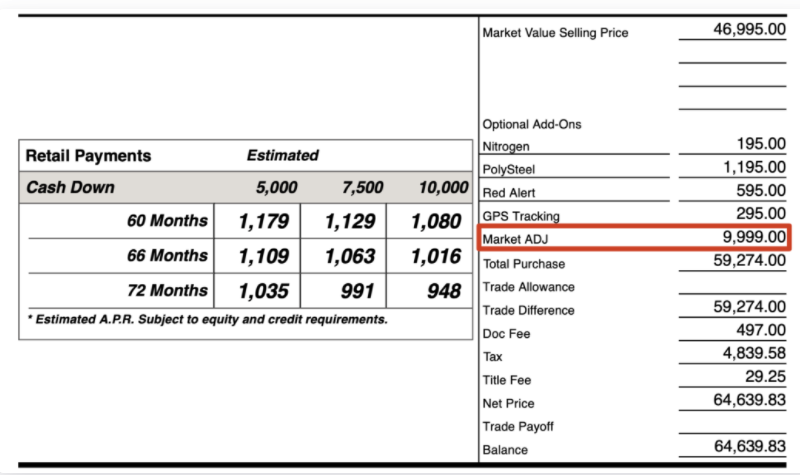When buying a new car in the US, you are given two prices on the vehicle as you browse: Manufacturers Suggested Retail Price (MSRP) and Market Adjusted Price (MAP).
Why? MSRP is required disclosure on all vehicles and is commonly called the “sticker price.” It used to be an anchor price that told buyers what they could expect to pay. Everyone also assumed there was a little wiggle room in that MSRP.
The breakdown in supply chain due to COVID and other issues has reduced the availability of automotive products. First there were chip shortages. Then there were shipping delays from Asia that effected Korean and Japanese cars coming in and also parts for those being assembled in North America. Then more shipping delays due to the COVID affected not going to work, reducing the labour force. The US has had more than a million deaths from the pandemic and despite their desire to ignore this, it has had a serious effect.
There was also a gap in purchasing as people locked down for COVID and didn’t purchase or use cars at the usual rate. As that wore down, orders for cars came rushing in. But the supply wasn’t there. Dealers who couldn’t open their doors also had stopped ordering extra vehicles.
That brought us to where showrooms are essentially empty. There is no inventory of new cars waiting. As a result, people wanting a replacement vehicle, turned to used cars, particularly those of very recent vintage. Consumers were faced with waiting a couple months for a vehicle or accepting one that was a year or two old. Prices started to creep upwards.
Dealers realized that people could buy a new car, wait for it, and then turn around and sell it for a premium. That prompted them to take the step of adding their estimation of Market Price in a separate sticker on new vehicles. This included a “Market Adjustment” figure and yielded a number that was above the MSRP, often thousands of dollars. They claimed that anyone could buy a vehicle for the MSRP and sell it at a profit for the Market Price.
There is a concept in psychology called “Anchor Pricing” which is used to provide a context from which to negotiation. When I say, “I won’t take anything less than $100 for this!” – you know that we are talking about some price in the range of that number, not necessarily higher or lower but in that range. It gives a frame of reference to begin the negotiation.

Adding the Market Adjusted Price, including the adjustment, provides a new anchor price for negotiations for car dealers.
Looking at an MSRP of, say, $25,000 and then seeing a Market Value Selling Price of $32,000 (these are figures I have seen – the graphic to the left is an actual sticker), leads to an easy negotiation for the dealer “down” to an MSRP, a full retail price. There is little incentive for the dealer to go below that MSRP because natural comparisons will be with the Market Value Selling Price.
This means that new vehicles are frequently selling for thousands of dollars over MSRP. Because most cars are leased or bought with loans, consumers are financing thousands of dollars of additional dealer markup based on the “adjusted price” simply because of the supply shortage. They are paying interest on that market adjustment through the life of their loan or lease.
If the supply shortage phases out when supply chains get back into full operation, consumers will have a stranded asset in their car that is much more than the usual “just off the lot” depreciation.
Could this mean that a 2022 vehicle would be worth more than a 2023 vehicle? It is quite possible. We will have to wait and see.